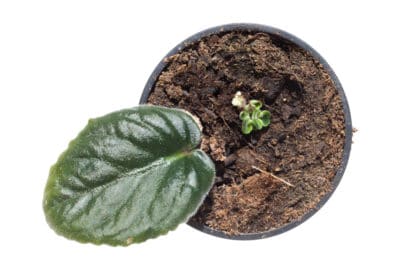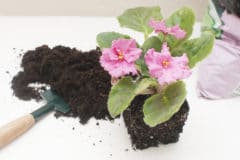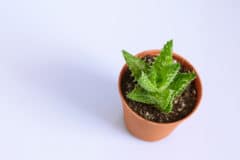Important Points to Remember
Always choose the healthiest plants and the best leaves for propagation purposes. Use the methods that work best for you. For some that means misting plants several times a day, while others use a plastic bag or humidity dome. Pay careful attention to the basics of light and temperature. Always label your plants individually.
Choosing Varieties
Although most African violets will come true from leaf cuttings, there are some exceptions:
- Chimeras have a unique genetic structure; propagate only through side shoots or suckers.
- Fantasies (violets with speckles or blotches on petals) may not breed true.
- Legally protected or patented violets can be propagated, but it is illegal to do so unless you are replacing a single plant for your own use.
Leaf Propagation
Healthy, mature leaves will give you the best success when propagating. Choose mostly green leaves from variegated varieties as they are less likely to rot. Cut the stem at an angle close to the plant in the same direction the leaf hairs grow. If you use rooting hormone, dust it very lightly on the bottom of the leaf with a fine paintbrush. Place leaf stem in water or soil.
Using Water vs. Soil
Most African violet leaves will root readily in water or soil. Using water is quick and easy and you can see exactly what’s happening as far as root development is concerned. Potting directly into soil means the new baby won’t have to go through transplant shock. In both cases use good-quality water, such as rainwater, at room temperature to grow or water your leaves.
Propagating with Side Shoots
Many African violets sucker or produce side shoots. These look like tiny new plants growing from the leaf axils. Some will develop roots as they grow. You can remove them (including the ones without roots) and plant in a small (two-inch) pot. Place the pot under a humidity dome or inside a plastic bag to increase humidity.
Tincture of Time
Propagating African violets does not bring instant results, so be patient. A healthy leaf will usually take about a month to develop roots. Once the roots appear, the cut stem will begin to produce a new plant; this may take at least a month. The new plant will not be ready to plant in soil or transplant to a larger pot for at least two or three more months.












